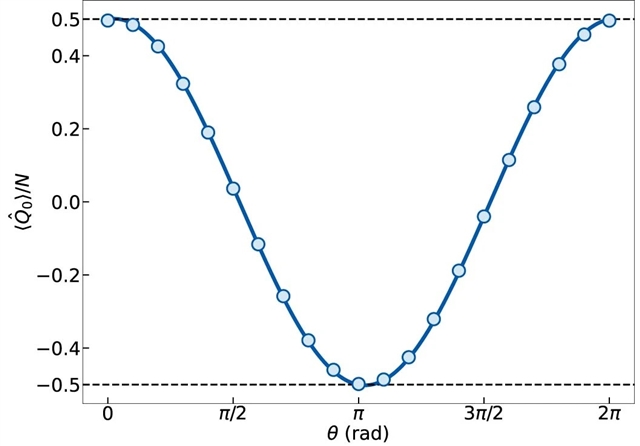
近日,清华大学的尤力及其研究小组与浙江科技学院的黄奕筱以及法国索邦大学的Qi Liu等人合作,并取得一项新进展。经过不懈努力,他们探究了原子玻色-爱因斯坦凝聚态中回波自旋向列压缩的量子增强传感。相关研究成果已于2023年8月7日在国际知名学术期刊《自然—物理学》上发表。
该研究团队报道了在自旋原子玻色-爱因斯坦凝聚态中实施的非线性干涉测量方案与回波向列压缩。研究人员通过自旋混合动力学产生自旋向列压缩态,这是光学四波混合的原子模拟。通过类似于自旋回波技术的状态翻转操作,压缩状态被重新聚焦到经典初始状态的附近,从而实现了编码相位优先放大而不是噪声。使用包含26,400个原子的大系综,研究人员观察到对小角度拉比旋转的探测灵敏度超过了标准量子极限15.6±0.5dB,以及在类拉姆齐干涉测量应用中的相位传感16.6±1.1dB。这些研究结果突出了自旋向列压缩态的多体相干性,并指出了它们在原子磁力计、原子钟和洛伦兹对称性违反的基本测试中的潜在量子计量应用。
据悉,量子纠缠可以提供超越标准量子极限的更高测量精度,这是经典方法可以达到的最高精度。然而,由于纠缠的制备、控制和检测方面的实验限制,大幅度增强的观测仍然具有挑战性。
附:英文原文
Title: Quantum-enhanced sensing by echoing spin-nematic squeezing in atomic Bose–Einstein condensate
Author: Mao, Tian-Wei, Liu, Qi, Li, Xin-Wei, Cao, Jia-Hao, Chen, Feng, Xu, Wen-Xin, Tey, Meng Khoon, Huang, Yi-Xiao, You, Li
Issue&Volume: 2023-08-07
Abstract: Quantum entanglement can provide enhanced measurement precision beyond the standard quantum limit, the highest precision achievable with classical means. However, observations with a large enhancement remain challenging due to experimental limitations in the preparation, control and detection of entanglement. Here we report a nonlinear interferometry protocol with echoed spin-nematic squeezing in a spinor atomic Bose–Einstein condensate. We generate spin-nematic squeezed states through spin-mixing dynamics, an atomic analogue of optical four-wave mixing. The squeezed states are refocused back to the vicinity of the classical initial state by a state-flip operation that resembles spin-echo techniques, which leads to encoded phases preferentially amplified over noise. Using a large ensemble of 26,400 atoms, we observe a sensitivity of 15.6±0.5dB beyond the standard quantum limit for detecting small-angle Rabi rotation, as well as 16.6±1.1dB for phase sensing in a Ramsey-like interferometry application. Our results highlight the many-body coherence of spin-nematic squeezed states and point to their possible quantum metrological application in atomic magnetometers, atomic clocks and fundamental tests of Lorentz symmetry violations.
DOI: 10.1038/s41567-023-02168-3
Source: https://www.nature.com/articles/s41567-023-02168-3
